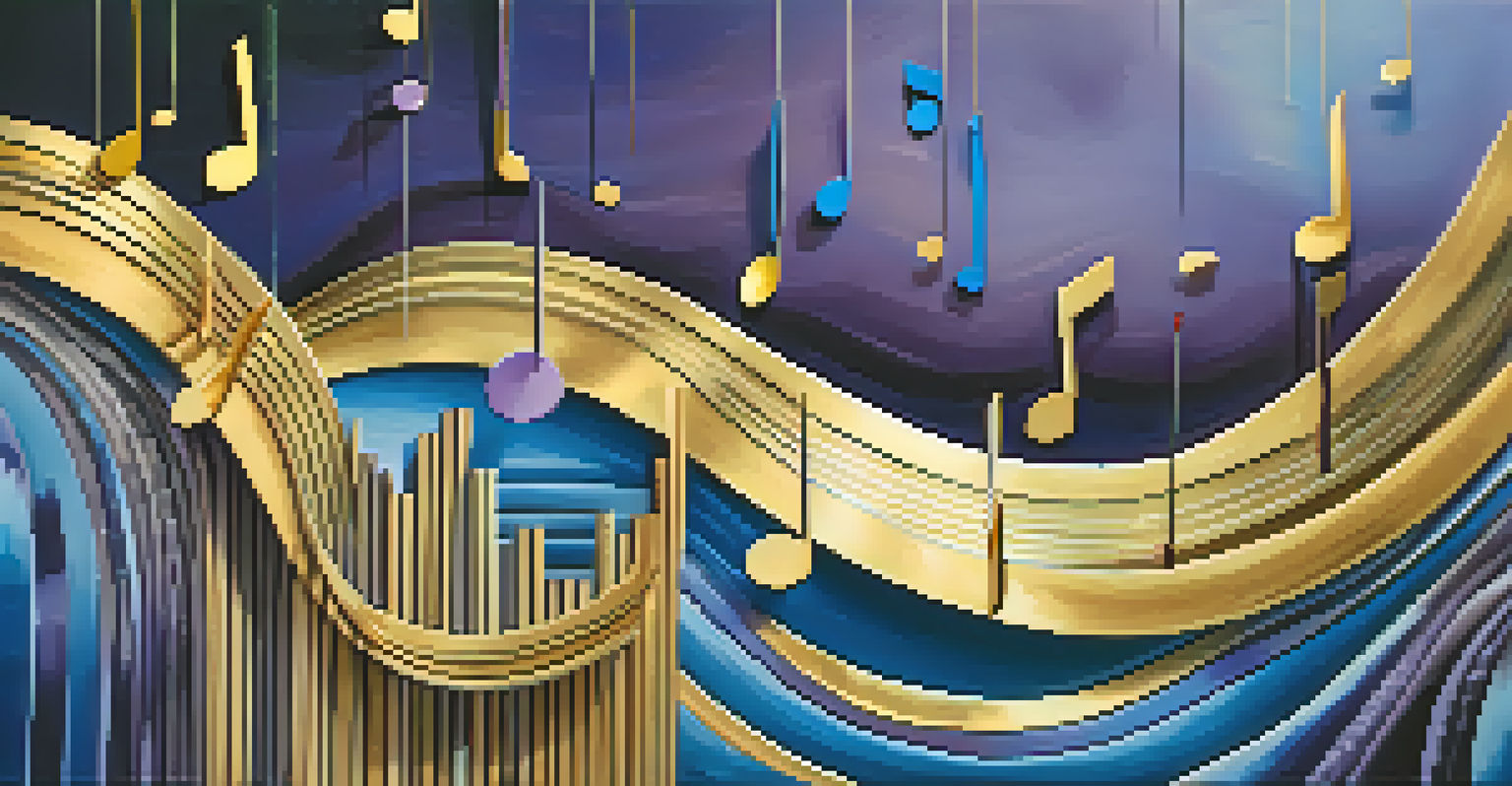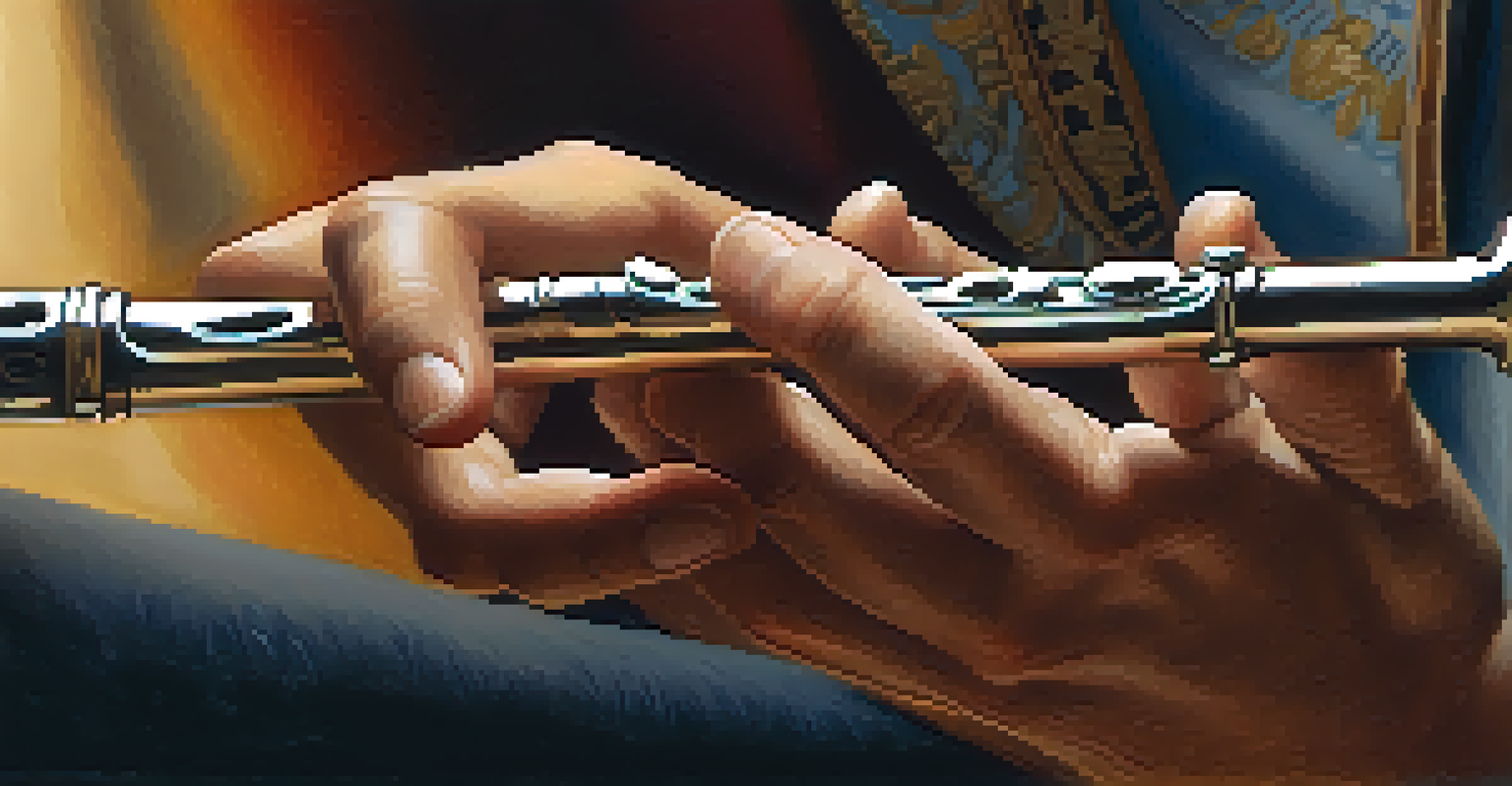Arranging Music: Techniques for Effective Composition

Understanding the Basics of Music Arrangement
Music arrangement is all about taking a piece of music and deciding how it will be presented. This includes choosing instruments, harmonies, and the overall structure of the song. Think of it as preparing a dish; you have your ingredients, but how you combine them makes all the difference.
Music is the shorthand of emotion.
A good arrangement can transform a simple melody into a rich tapestry of sound. It allows the composer to express their vision more fully and can change the listener's experience entirely. Just like a chef might add spices to enhance flavor, an arranger adds layers to enhance emotion.
To start arranging, familiarize yourself with the basics of music theory. Understanding scales, chords, and rhythms will give you the foundation needed to play with different elements in your arrangement. This knowledge acts as your toolkit, ready for creative exploration.
Choosing the Right Instruments for Your Composition
Instrument selection is a critical step in music arrangement. Each instrument brings its unique voice and character, so it’s essential to choose ones that complement your melody. For example, pairing a bright flute with a warm cello can create an engaging contrast.

Consider the mood you want to convey; a heavy guitar riff can evoke energy and excitement, while a piano can evoke introspection and calm. By thoughtfully selecting instruments, you're crafting an emotional landscape for your listeners to explore.
Music Arrangement Basics Explained
Music arrangement involves selecting instruments, harmonies, and structure to enhance a piece's emotional impact.
Don’t hesitate to experiment with unconventional instrument combinations. Sometimes the most memorable arrangements come from unexpected pairings, like blending electronic sounds with classical strings. Creativity often thrives outside the box, so keep an open mind during this process.
Exploring Harmony and Chord Progressions
Harmony adds depth to your music, enriching the melody and creating a fuller sound. Chord progressions serve as the backbone of your arrangement, guiding listeners through emotional highs and lows. Think of it as a journey; the right chords can lead to breathtaking destinations.
The only truth is music.
Experimenting with different chord progressions can yield surprising results. For instance, a simple I-IV-V progression is classic, but adding a minor chord can introduce tension and resolution, taking the listener on an unexpected turn. Don’t shy away from using substitutions or variations to keep your music fresh.
Listening to various genres can inspire your harmonic choices. From jazz’s complex chords to pop's catchy hooks, each style offers unique insights into how harmony shapes music. By incorporating diverse influences, you can elevate your compositions to new heights.
Rhythm: The Heartbeat of Your Arrangement
Rhythm is often referred to as the heartbeat of music, providing structure and movement. It can dramatically impact the energy and feel of a piece, so choosing the right rhythm is crucial. Imagine a slow waltz versus an upbeat dance track; both have distinct emotional vibes driven by their rhythms.
Experimenting with different time signatures can open up new creative avenues. While 4/4 is the most common, exploring 3/4 or even odd meters like 5/4 can add an intriguing twist to your arrangement. Think of it as adding a surprise ingredient to a familiar recipe.
Choosing Instruments Wisely
The right instrument selection can create an emotional landscape that complements your melody and engages listeners.
Layering rhythms can also create a more complex and engaging arrangement. Consider having a steady bass line beneath a syncopated melody; this interplay can keep listeners on their toes, making them want to move or groove along with the music.
Melody: Crafting Captivating Themes
The melody is often the most memorable part of a composition, acting as the focal point for listeners. Crafting a captivating melody requires a blend of creativity and structure, ensuring it’s both unique and singable. Think of your melody as a story; it should have ups and downs, keeping the audience engaged.
Using repetition and variation can help reinforce your melody while keeping it fresh. Returning to a familiar phrase can evoke nostalgia, while slight variations can maintain interest. Just as a good book has plot twists, your melody can benefit from surprises along the way.
Consider the emotional arc of your melody as it progresses through the arrangement. Building tension, releasing it, and then introducing new themes can create a dynamic listening experience. This emotional connection is what keeps listeners coming back for more.
Dynamics: Adding Emotion and Contrast
Dynamics play a vital role in how music is perceived, allowing you to convey emotion and create contrast. By varying the loudness and softness of different sections, you can guide listeners through the emotional landscape of your composition. Imagine a whisper followed by a powerful crescendo; the impact can be striking.
Utilizing dynamics effectively means being intentional about when to build intensity and when to pull back. This ebb and flow can evoke feelings of tension and release, much like the waves of the ocean. A well-placed dynamic shift can make a familiar piece feel new and exciting.
The Importance of Dynamics
Dynamics add depth and emotion to music, guiding listeners through the arrangement's highs and lows.
Don’t forget to consider the dynamics of each instrument within the arrangement. Balancing volume levels ensures that every part shines and contributes to the overall experience. Just like a well-mixed cocktail, each ingredient should enhance the others, creating a harmonious blend.
Finalizing Your Arrangement with Review and Revision
The final stage of arranging music involves careful review and revision. This is where you polish your work, ensuring that every element serves the overall vision. Listening critically to your arrangement can help identify areas that need tweaking or enhancing.
Consider sharing your arrangement with trusted peers for feedback. Fresh ears can provide valuable insights, highlighting aspects you might have overlooked. Just as a second opinion can improve a painting, feedback can elevate your music.

Don’t hesitate to rework sections if needed. Sometimes, the best ideas emerge during revisions, leading to unexpected breakthroughs. Remember, arranging is a creative process, and allowing yourself the flexibility to revise is key to achieving a powerful final piece.